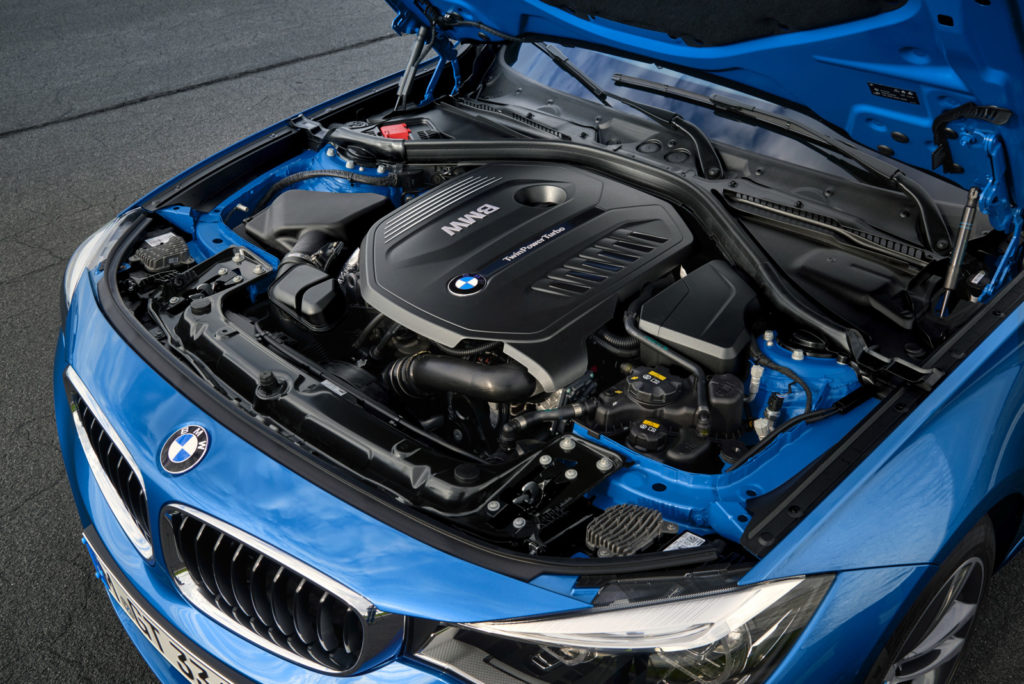For some of us, the advent of the turbocharged direct-injection engine still feels like the latest and greatest thing to happen within the automotive landscape in recent memory. Why wouldn’t it? Manufacturers are clearly still exploring the possibilities made feasible by the marrying of the two technologies, and never before has such great power been available with economy and reliability that are easy to live with.
Over a decade ago, the BMW N54 debuted and ushered in the forced-induction, precision-injection era to American customers, offering 300 horsepower and 300 pound-feet of torque across an incredibly usable rev band. In the years since, the respected N55 has come and gone, while other stablemates of varying cylinder counts have been added to the lineup.
Long known for its lineage of celebrated inline six-cylinder engines, BMW’s current mainstay is the B58, which was introduced to the American market starting with the 2016 model-year 340i sport sedan. Like other members of the family that include the B48 and B38 four- and three-cylinder engines, the B58 uses modular construction and a closed-deck engine-block design for increased strength and a shorter charge-air travel distance. The engine uses double VANOS variable cam phasing and Valvetronic variable valve timing, and also has a single twin-scroll turbocharger which is plumbed with an advanced air-to-water intercooler. The most pedestrian version hit the market offering 322 horsepower from 5,500 to 6,500 revs and 332 pound-feet of torque on tap from 1,380 to 5,000, along with a 7,000-rpm redline—numbers that aren’t far off from what a Performance Power kit or M Performance tuned N55 develops.
The following years would see increasingly more potent versions added to the lineup, with a 380-horse, 369-pound-feet version slated to be fitted beneath the hoods of the upcoming G20 M340i and Z4 M40i. BMW has not rested in the meantime, however, and now specific details of a B58TU—or technical update—have been leaked, with an impressive list of unforeseen changes and upgrades, along with a 388-horsepower rating for one variant.
BMW has been using the Technical Update or TU designation for a while now. In the beginning, it signified important improvements like the addition of VANOS and a more usable rev range. The automaker has not stopped in its relentless pursuit of technical refinement on all levels, and BMW engines, a long-term core competency, are no exception. Recently, German automotive media outlet BimmerToday released details of the newest alterations and adjustments to the design of the updated B58, and they’re quite substantial.
According to our friends at BMWBlog, many of the changes were aimed at improving the B58’s ability to satisfy requirements of the new Worldwide Harmonized Light Vehicles Test Procedure (WLTP), but the changes did not come without performance improvements. Scheduled to be offered in two versions, one is 340-horse version dubbed ML for middle power level, while the other 374-to-388-horsepower variant is referred to as OL for upper level, and both fall under the broader designation of B58TU1.
Headlining matters is the switch to an integrated component which marries the exhaust manifold and turbocharger to the cylinder head. Volkswagen was among the first to introduce similar technology in volume production with their new-generation 1.8-liter turbo, and the technology has since spread to other designs such as their ubiquitous two-liter and the more recent 1.4. Now BMW is using a similar concept on the B58TU1 ML; benefits included weight reduction, improved thermal management, and reduced costs. The turbocharger itself was also relocated for the lower-output version, while the more potent OL uses the same design as before, meaning the turbocharger is integrated with the manifold, as opposed to the manifold being integrated with the cylinder head.
Fuel delivery has also been strengthened, with the original B58’s 2,900-PSI maximum pressure giving way to the TU1’s limit, which is over 5,000 PSI. If the numbers sound familiar, that is because they’re nearly identical to improvements made to the N63 and S63 V8s not long ago. Beyond simple performance and efficiency benefits, increasing the direct-fuel-injection pressure also yields a 50% reduction in cumulative soot-particulate matter, one of the main targets of ever-increasing emissions standards.
The crankcase was also revised to accommodate the addition of a redesigned timing-chain setup on the front. While the initial B58 uses a two-piece style, the B58TU1 accomplishes the same tasks with a one-piece chain-drive layout, which eliminates a few components while also spinning with 30% less friction. In terms of the oil sump, wall thickness was optimized, which equated to respectable weight savings; other details in the same general region include a redesigned forged crankshaft, which also saves some weight.
Rounding things out is a new cooling-system circuit approach, which keeps coolant flowing to the cylinder head and engine block separately. The main goal of this change was to better regulate cylinder temperatures and conditions by maintaining a more consistent thermal state. The original B58 comes encapsulated within a heat-retaining jacket for similar reasons, and the changes in the cooling system make for improved efficiency and lowered emissions in both WLTP and average daily-driving routines for individuals who don’t stomp the gas pedal at every onramp. Keeping combustion chambers hot also keeps soot levels low, especially when the driver floors it when a gap opens up on the freeway.
Specifics relating to output and other numbers haven’t been released yet, but horsepower figures for the B58TU1 are impressive enough on their own. The mid-level-output ML version will offer 340 horsepower, while the more performance-oriented OL which you might find under the hood of an M Performance model in the near future—hello, Z4 M40i!—makes between 374 and 388 horsepower. We’re sure torque has been increased as well, with a wider band than before, and together with the emissions improvements, the technical update sounds like a well-executed revamping. Only time will tell how stressed parts like the timing chain will fare, but we’ll be here watching the story play out.—Alex Tock
[Photos courtesy BMW AG.]
